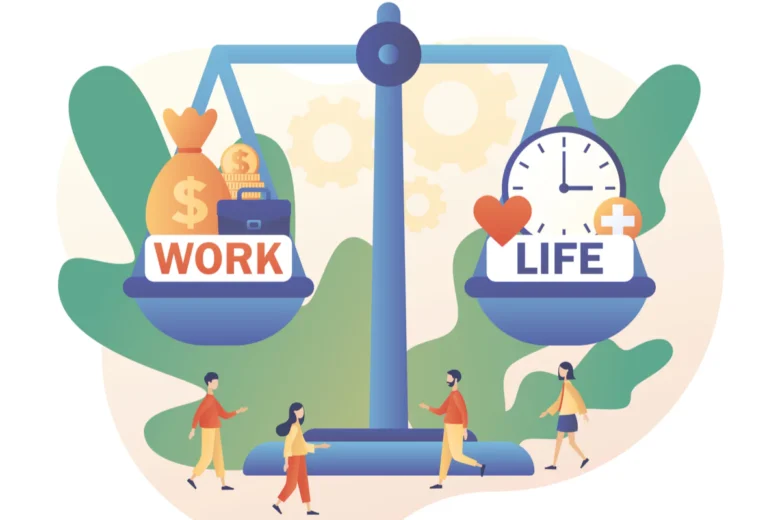The concept of balancing work and life is no longer only a fashion statement and a luxury; it’s an absolute necessity. People want it, and research suggests it’s a necessity, and employers who are forward-thinking recognize the importance of it. It’s not just about allowing people to go home from work on time but also creating environments that allow both personal and professional lives to flourish in harmony. How can employers accomplish this? The key is to implement well-thought-out practices and create an environment of support.
Company Culture
The foundation of a healthy balance between work and life begins with the company’s culture. A culture that values the well-being of employees provides the needed framework for support to achieve balance. Employers who value the health of their employees as well as encourage breaks and show empathy create the conditions for a balanced work-life balance. It’s not about offering lip service to wellness; it’s about integrating it into the fabric of the company. If employees feel that they are valued above their performance, they’re more likely to remain active and productive.
Flexible Work Arrangements
Flexibility is a buzzword with a reason: it is effective. Offering remote access with flexible start and finish times or even shortened working hours allows employees to handle their professional and personal obligations more efficiently. It’s not only about convenience. Flexible arrangements recognize the different demands of today’s workforce. Employers who promote flexibility offer their employees the freedom to choose work schedules that are in line with their individual situations while still meeting objectives for the organization.
Supportive Policies
Policies that promote a healthy work-life balance are more than just guidelines; they’re the foundational element that bolsters the commitment of an organization. Paid time off for parents, paid leave, and mental health days are but some instances of the policies that directly affect the lives of employees. Employers that excel go beyond compliance and offer robust and well-thought-out policies that address the demands of their employees. The way you show your care by offering tangible results speaks more than any words.
Employee Development
In addition, encouraging professional growth is a factor in fostering equilibrium. People who can see clear avenues to advancement feel more confident in their jobs and lives. By providing learning opportunities as well as mentorship programs and career planning workshops Employers can help their workers improve their skills without overwhelming them. Realizing that growth is possible without sacrificing everything else in life leads to achieving balance.
Leadership Example
Words are not as powerful as actions, particularly in the realm of leadership. Leaders establish the standard for a healthy work-life balance by demonstrating their own behavior. If managers are e-mailing at midnight or not taking the vacation, staff could be pressured to do the same. The best leaders have time off, adhere to the boundaries, and actively encourage their staff to follow suit. Their behavior is a model of the values of the company.
Open Communication
In workplaces, balance thrives when open communication is a standard. When employees feel at ease voicing concerns or seeking accommodations, any barriers that hinder balance could be dealt with proactively. Employers should create an environment of safety where employees can freely communicate without fear of judgment or negative reactions. Even conversations that are merely about work or responsibilities could result in changes that enhance overall well-being.
Technology and Tools
Technology is both the issue and the solution. Employers that are aware of technology can improve efficiency and set boundaries to avoid burnout. Tools that promote collaboration and simplify work can reduce stress and help employees concentrate on their work. On the other hand, encouraging digital detoxes or limiting communication related to work during non-work hours can help establish a healthier separation between work and private life.
Measuring Success
It’s impossible to improve if you don’t know how. The tracking of metrics like the rate of turnover, engagement scores, and surveys on employee satisfaction can help employers assess the success of their initiatives to improve work-life balance. Feedback loops are crucial to knowing what’s working and where there are gaps. The best employers view these initiatives as a continuous process that is always adapting to meet the ever-changing requirements of their employees.
The Path Forward
Work-life balance isn’t a “nice-to-have” for great employers. It’s a must for businesses. Employers who prioritize balance not only keep top talent, they will also ensure that their employees are engaged, energized, and able to perform at their highest. It starts with deliberate development of a culture, flexibility, policies, and open communication. Leaders who live by their word and implement tools that help, not hinder, the work-life balance for teams to succeed.
In demonstrating that balance is achievable and assessing your impact, you will make a healthy and happy environment where everyone gains. If you’re wondering what to do next, take note that it all starts by taking small steps with a real dedication.
FAQ
1. What does “work-life balance” mean?
The term “work-life balance” refers to the way in which individuals divide their time and energy between the demands of their jobs and their personal lives.
2. Do flexible working arrangements really aid in the balance?
Yes, flexible arrangements offer employees the ability to set their time, which allows employees to balance work and personal obligations more effectively.
3. What can technology do to assist in improving the balance between work and life?
Collaboration tools can improve efficiency, and the restrictions on communication after hours may provide the time employees require to recharge.




